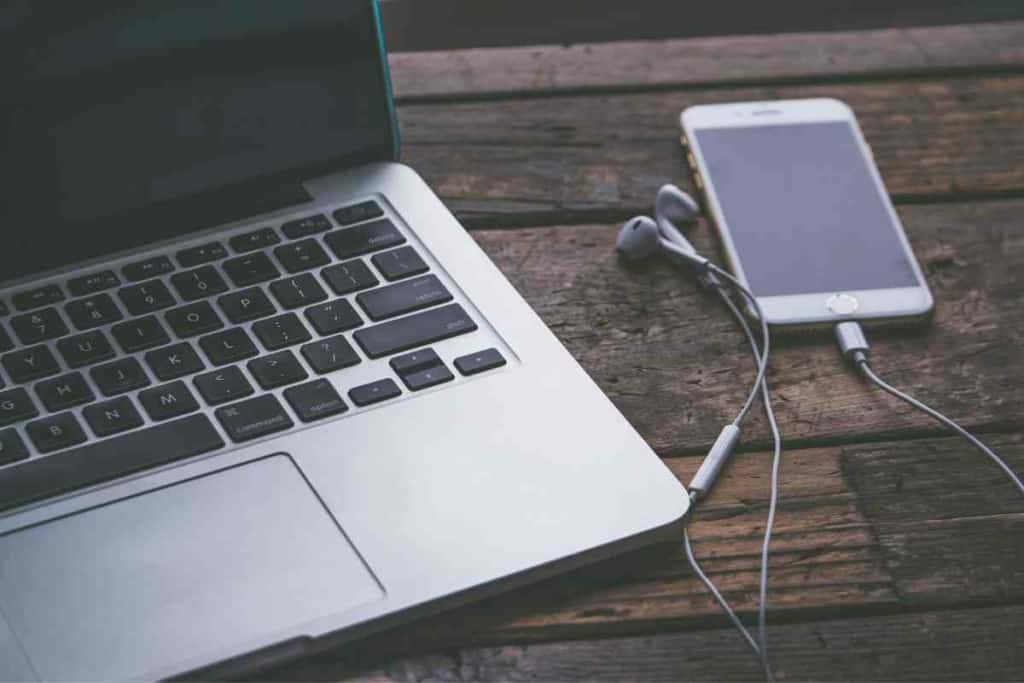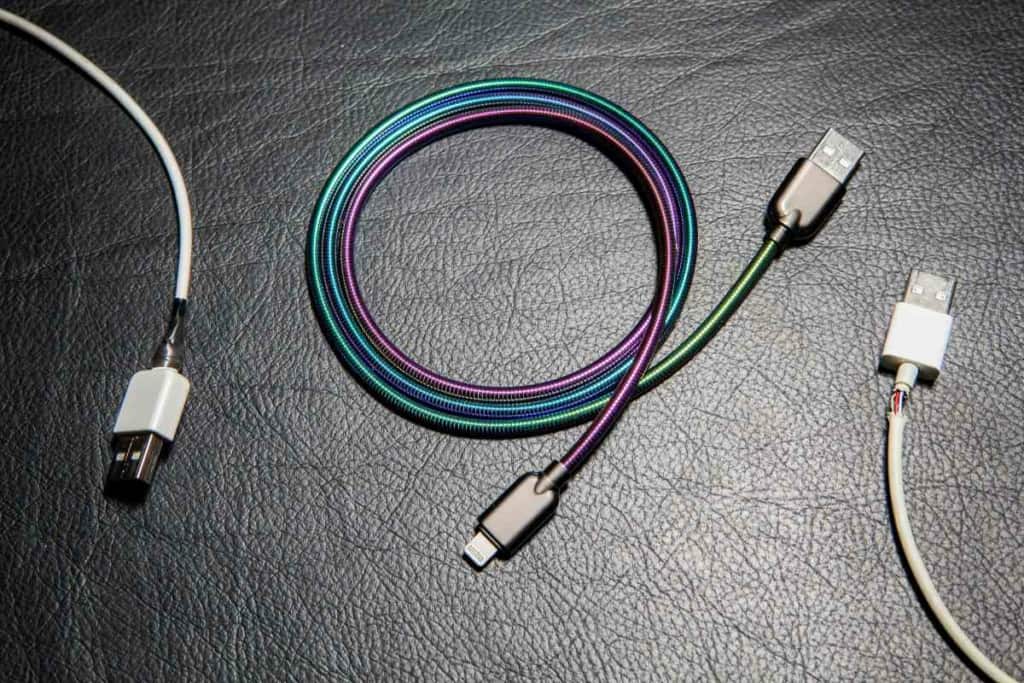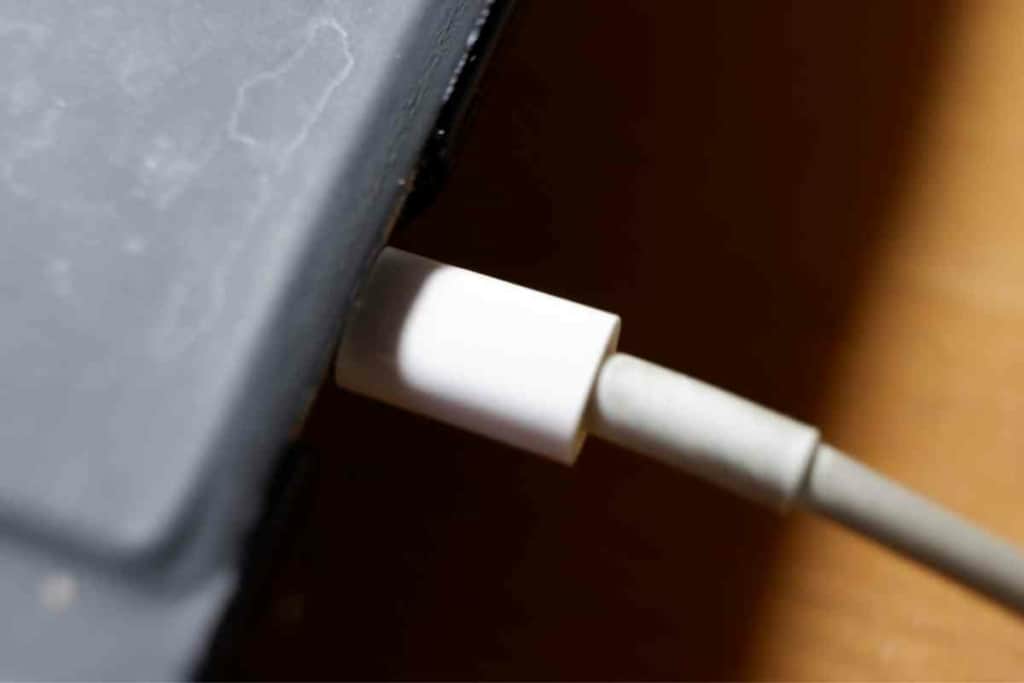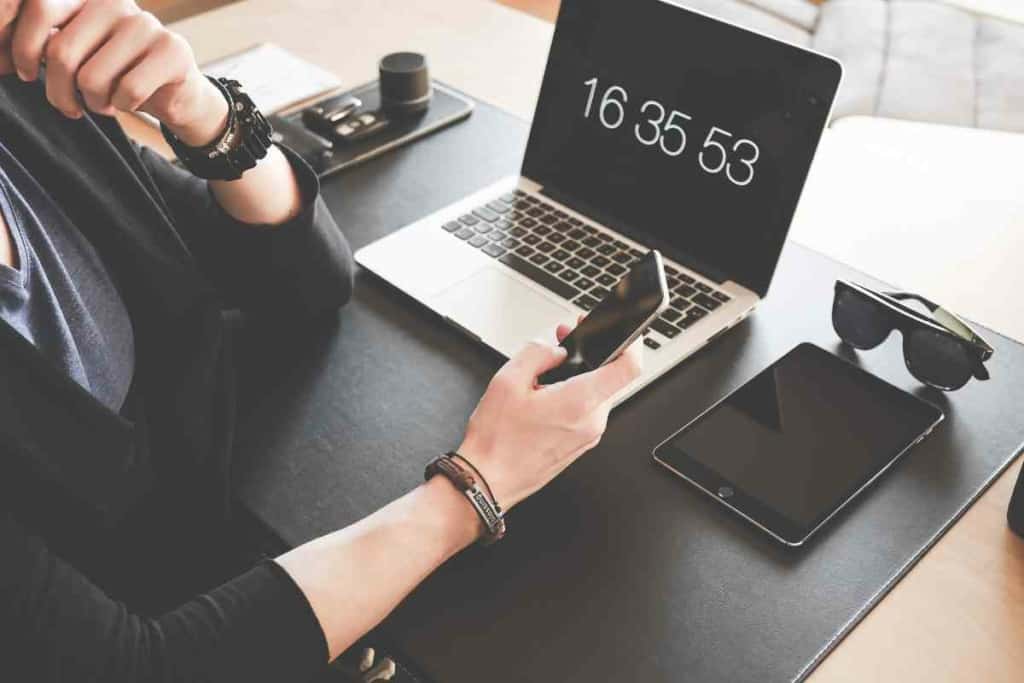3 Reasons Why Your iPhone Beeps When You Plug It Into A Laptop
iPhones, like any other, have their issues. However, if your iPhone is beeping when you plug it in, it most likely isn’t a problem with your phone at all.

Why is my iPhone beeping when I plug it into a laptop?
If your iPhone beeps when you plug it into a laptop, it’s most likely because your iPhone is alerting you that your lightning cable is damaged or worn out and is unable to keep a stable connection to your laptop.
As an Apple enthusiast myself, I’ve had plenty of experience with all different models of iPhones, iPads, and Mac computers.
While I have experienced the occasional problem here and there, overall, these products almost always work as they should.
However, if your iPhone is beeping when you plug it into your laptop, there’s no need to worry. As soon as you learn a bit more about what causes the problem, you’ll be able to fix it in no time.
Why Is My iPhone Beeping When I Plug It Into My Laptop?
If everything is working as it should, when you plug your iPhone into your laptop, you should hear a chime or buzz if in silent mode that notifies you that the iPhone is properly connected and charging.
This is what is supposed to happen and it’s just a friendly notification to make your life a bit easier, however, if the buzzing or beeping sound still persists after you plug it in, it is most likely because your lightning cable is unable to keep a stable connection between your laptop and your iPhone.
As the cable struggles to keep a stable connection, each time the iPhone loses and regains the connection it will beep or buzz to notify you. If the connection is really unstable, this would cause the iPhone to continuously beep or buzz until the cable is unplugged.
This can be really annoying, both just because of the continuous beeping and buzzing but also because it is incredibly frustrating not to be able to charge or sync your iPhone as you should.
There are a few different things that could cause this inability to keep a stable connection including gunk buildup in the iPhone’s charger port or, more likely, a damaged lightning cable.

Blocked iPhone Charging Port
Lint, dirt, and any other sort of gunk can easily get stuck in your charger port over time, causing your iPhone’s charging port to get clogged and making it impossible for your lightning cable to connect effectively.
If you find that this is the problem causing the connection issues, you’ll need to try to remove whatever is clogging up the charging port.
The easiest way to do this is to use a can of compressed air. Point the can at your charging port and shoot a few short bursts of air into the port.
You should be able to see the debris fall out of the charging port as you do this. Just make sure not to hold the can too close to the charging port as this could cause further damage.
While this is the less likely cause of the issue, it still sometimes happens. However, if you clean out your iPhone’s charging port and the issue still persists, there is no doubt that your lightning cable is to blame.
Damaged Lightning Cable

While most Apple products like the iPhone and iPad are quality products built to work properly and last a long time, the lightning cables are a different story.
While you might be able to have your new MacBook for years to come, you’ll be lucky if you can get much more than a year out of a lightning cable before it starts to go bad.
Lightning cables have become notorious for their lack of longevity, however, the good news is that if you come to the conclusion that this is the problem, it is incredibly cheap and easy to fix.
All you need to do is buy another lightning cable and your iPhone once again be able to maintain a stable connection with your laptop, causing the constant beeping and buzzing to stop.
USB Restricted Mode
While this wouldn’t cause your iPhone to continuously beep and buzz, USB restricted mode being enabled could contribute to your iPhone’s beeping and buzzing problem.
USB Restricted Mode is a security feature that prevents devices that are connected to your iPhone through the lightning cable from making a data connection with your iPhone, and it can only be enabled if your iPhone is connected to another device like a laptop.
When this mode is enabled, your iPhone will beep or buzz three times consecutively. While this wouldn’t cause your iPhone to beep and buzz nonstop, this combined with an unstable connection could easily make the constant beeping problem much worse, so it is something else to be aware of.
How Can I Make My iPhone Stop Beeping Without Getting A New Cable?
If you are unable to get a new lightning cable right away and just want to make the beeping and buzzing stop, you can easily accomplish this through the Settings Menu.
Just simply open up Setting on your iPhone and then navigate to and click on Sounds & Haptics. Once the Sounds & Haptics menu is open, scroll all the way down to the bottom and click the toggle switch next to the System Haptics option.
Turning this setting off will disable the beeping or buzzing notification that your iPhone gives you when you plug it in.
While you won’t know for sure if your iPhone is charging or syncing properly without looking at it, You can still leave it plugged in and get as much of a charge as possible without having to listen to the infuriating beeping and buzzing sounds.
How Can I Make My iPhone Charging Cable Last Longer?

As I stated earlier, if your iPhone is continuously beeping when you plug it into your laptop, it is most likely because your lightning cable is worn down or damaged.
While it is inevitable that every lightning cable you buy will go bad eventually, there are still a few things you can do to make them last just a bit longer.
First, simply being sure not to bend and curl your lightning cable too much can go a long way. The insides of the cable are incredibly delicate and when you bed and smash your cable, the wires inside can be damaged, causing your cable not to work as well as it should.
Bending specifically where the cable is connected to the USB connector is especially damaging as this is the most likely point where the wires inside will begin to break and fray. So, be sure not to apply too much tension when pulling the cable to one side.
Another common method to help the longevity of your lightning cable is by using the spring from a pen to help keep the cable intact.
Simply attach the spring to the end of the lightning cable where it meets with the USB connector. Then just roll the spring onto the cable to that it completely surrounds the end of the cable.
Even though this may seem a bit silly, having the extra bit of protection from the spring on the end of your cable can go a long way to making your lightning cable last longer.
Lastly, instead of using the default Apple lightning cables, you should really consider buying a reinforced cable.
Though they cost a bit more, they are much more likely to last.
Key Takeaways
- If your iPhone is continuously beeping when you plug it into your laptop it is most likely because it is unable to maintain a stable connection.
- This could be caused by gunk accumulation in the charging port or, more likely, a damaged lightning cable.
- The best solution to the problem is to simply buy a new lightning cable, specifically a reinforced one that will last longer than the default Apple lightning cables.